10 inspiring examples of interactive maps

Ever been fascinated by a novel featuring a custom map of its fictional world? Or perhaps you've used Google Maps to virtually explore New York or a place you've never visited?
by Kiera Abbamonte
If you've experienced this, then you understand the power of data visualisation through maps. It can help immerse an audience in the physical setting of a narrative or visualise a data story in a clear, engaging manner.
Over the last decade, interactive maps have gained popularity in website design, coinciding with the increased accessibility and ease of use of mapping technology. Creating these maps might not be a walk in the park — after all, it takes time and expertise to craft excellent interactive maps — but numerous tools, providers, and tutorials exist to help streamline both the technical and design aspects of the process, assisting you in building your map.
That's great news since using maps for digital storytelling offers immense potential. You can animate maps with images, embed rich data, enable scroll-triggered functionality, or showcase macro and micro views of an issue or location.
In a previous post, we've discussed the best tools for crafting interactive maps. Now, let's focus on inspiration. We'll share some of our favourite bright and beautiful ideas for your next piece of digital storytelling with maps.
Image: Юрий Парменов/Adobe Stock
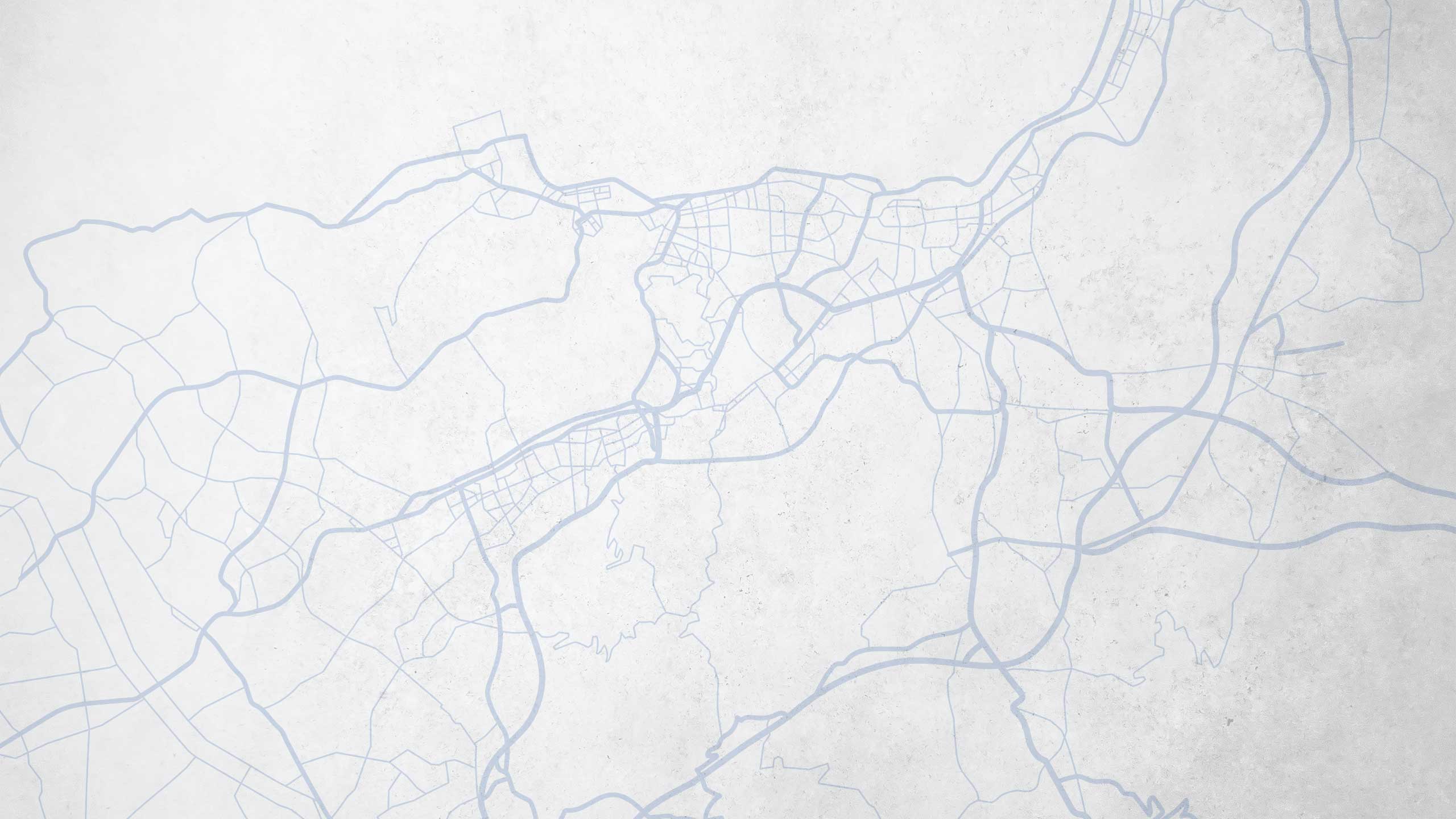
Start creating with Shorthand
It's the fastest way to publish beautifully engaging digital magazines, reports, internal comms, and more.
What is an interactive map?
Before diving into examples, let's clarify what we mean by 'interactive map'. Broadly speaking, an interactive map is any visual representation of a physical location that adapts as a reader interacts with it.
It's a wide-ranging definition, and rightly so—there are numerous ways to approach interactive mapping, depending on the information you wish to convey and the tools at your disposal.
An interactive map can be as simple as a series of static map images combined and activated via scrollytelling. More complex creations, like Google Maps-style maps or Google Street View, allow readers to drag, zoom, view points of interest at street level, or overlay data points, statistics, and other information. Mapbox is another popular choice for creating custom maps using APIs and JavaScript.
Regardless of the type of map, the essential feature of an interactive map is that it changes as the audience scrolls, clicks, or otherwise engages with it. Real-time updates, heatmaps, and popups are just a few examples of how interactivity can be incorporated into map view.
By adding interactivity, you can emphasise key points on the map, guide readers through the information they need, and boost audience engagement through interactive marketing. This approach can also be applied to social media campaigns or integrated into a WordPress site, making it a versatile tool for various digital storytelling formats.
Image: rikirennes/Adobe Stock
10 inspiring examples of interactive maps
In the following roundup, we'll explore different interactive map templates and base maps, along with case studies illustrating how full-screen maps enhance the user experience. So, let's dive in and explore the world of interactive mapping!

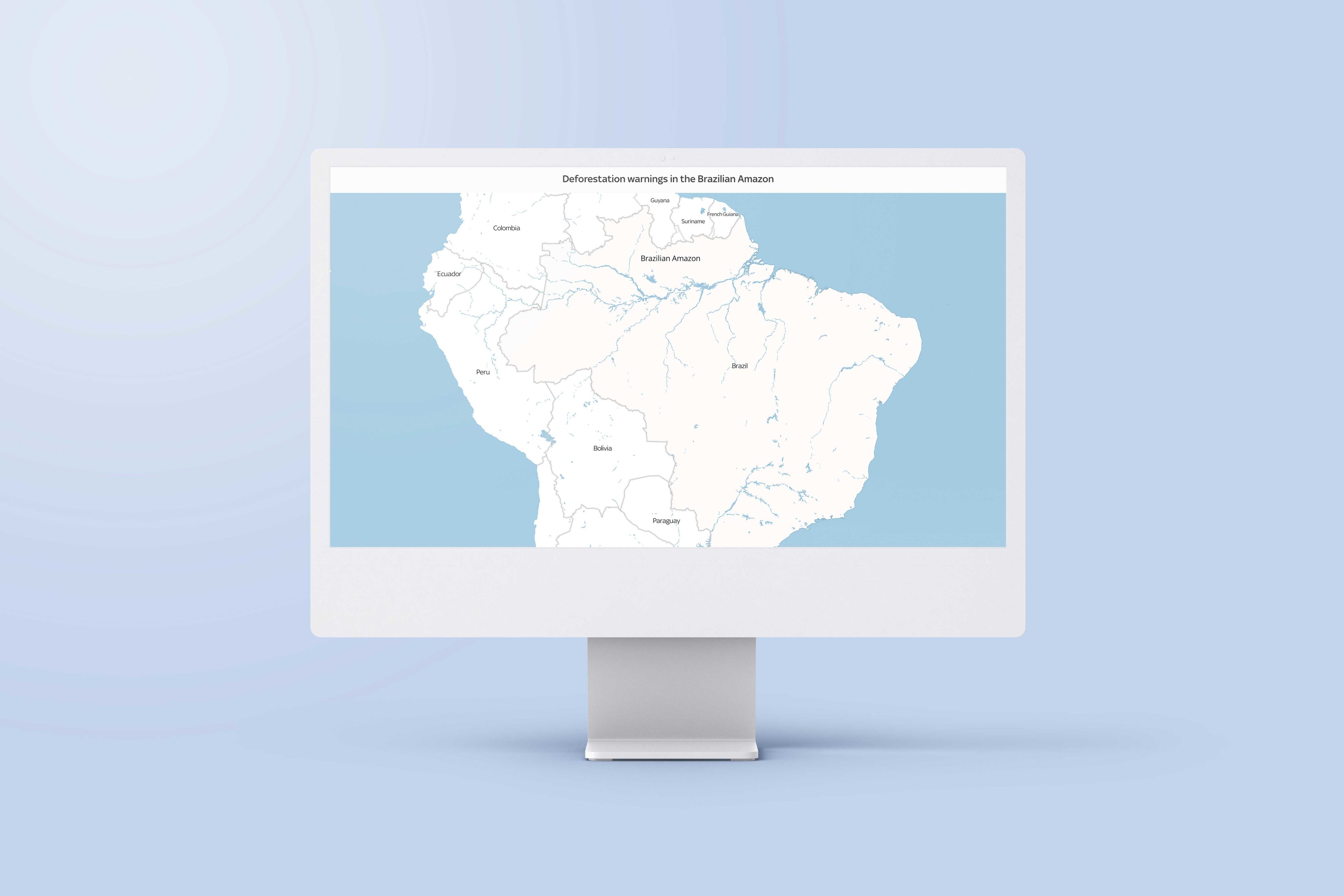
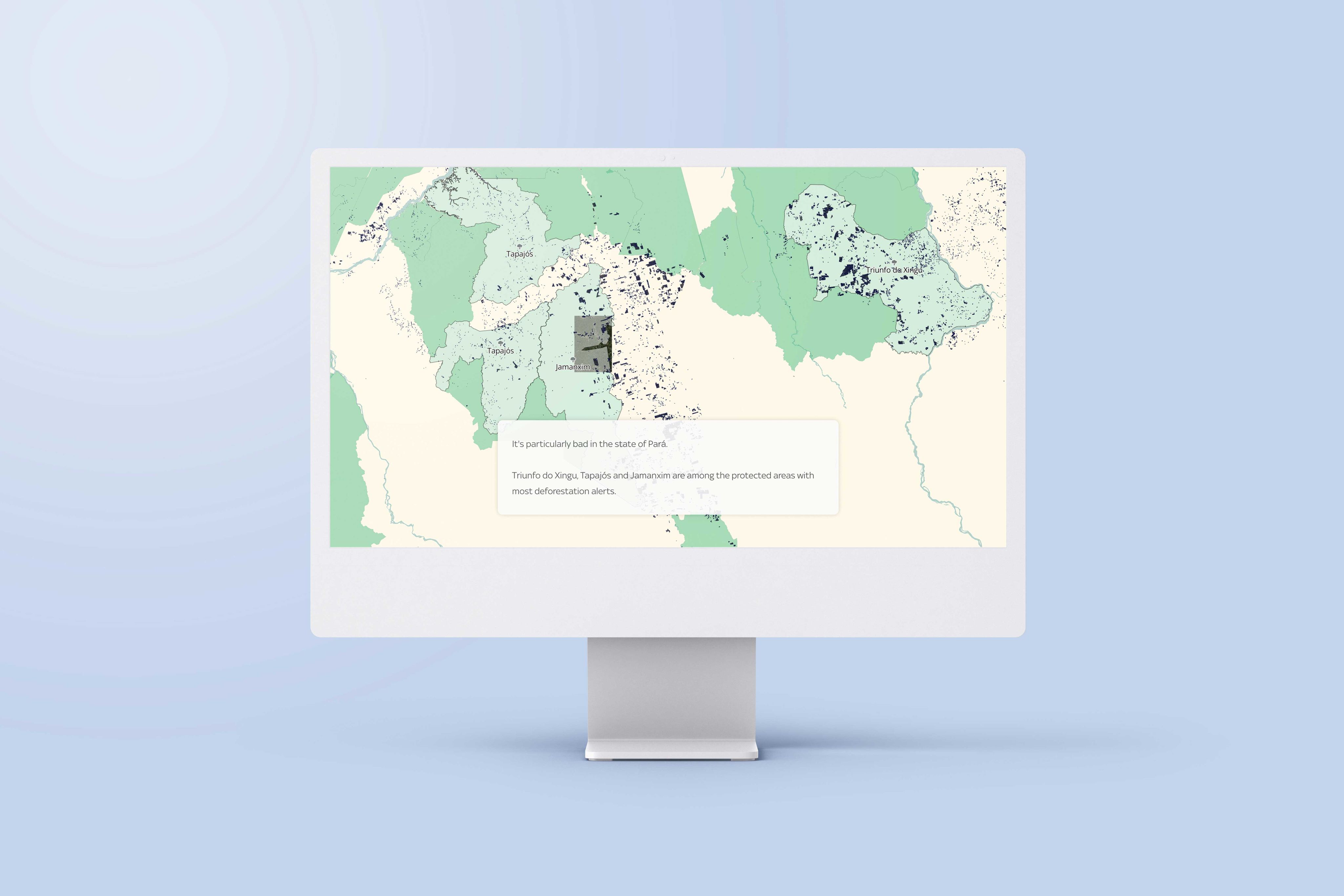
1. Amazon alert: Crime and destruction in the rainforest
- What it is: an environmental news report on the destruction of the Amazon rainforest
- Who created it: Sky News
- What the map shows: deforestation reports and protected regions in the Brazilian Amazon
Why we picked this example
In this data report, Sky News offers a masterclass in interactive mapping. The map uses Scrollpoints to highlight information as readers scroll, along with text overlays that add context to the visual map.
As the dark spots on the map grow, it helps visualise both the frequency and scale of deforestation reports in the Brazilian Amazon. As you continue to scroll, the map zooms in on particularly affected areas, which sets the stage for powerful satellite images to come.

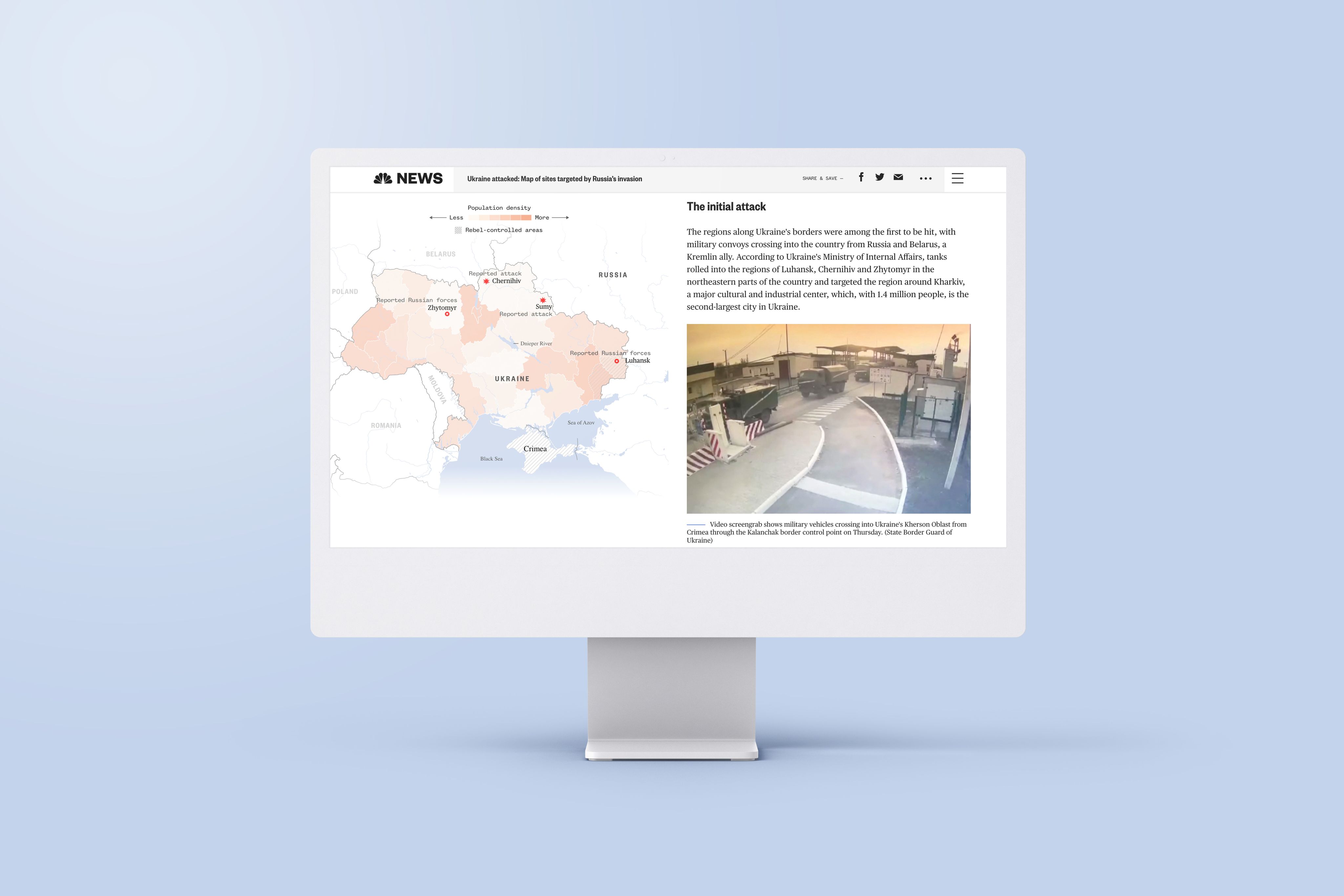
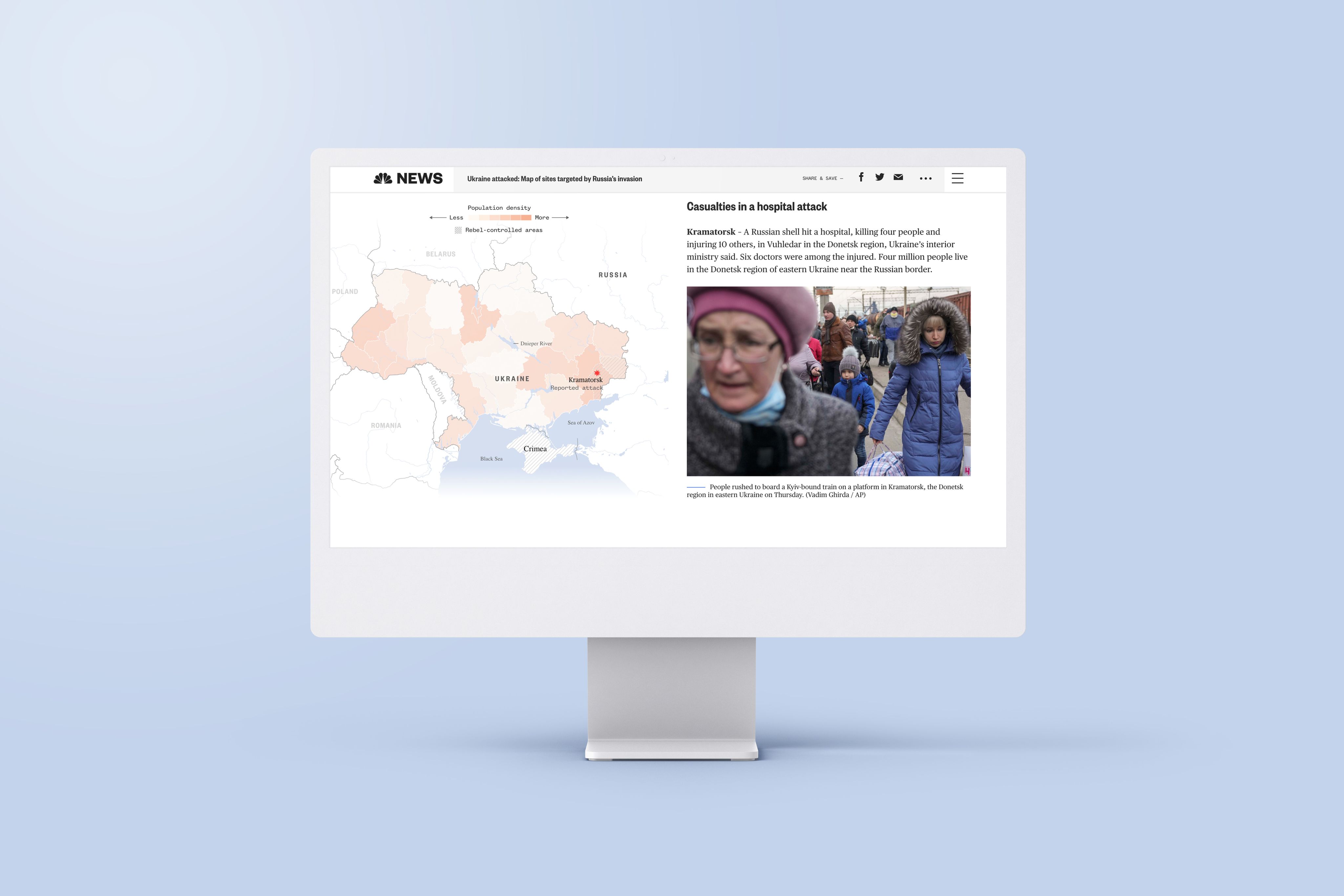
2. Ukraine attacked: Map of sites targeted by Russia’s invasion
- What it is: a news report detailing Russian attacks on Ukraine
- Who created it: NBC News
- What the map shows: the location of attacks
Why we picked this example
This interactive map from NBC News does two things incredibly well. For one, it shows readers — many of whom have likely never been to Ukraine — where Russian attacks have taken place. At the same time, it helps the audience contextualise the timeline of the war.
The map doesn’t move; it’s always visible along the left-hand side. But it changes as you scroll, highlighting the location of individual attacks and reports of Russian forces in tandem with the timeline of the written article.
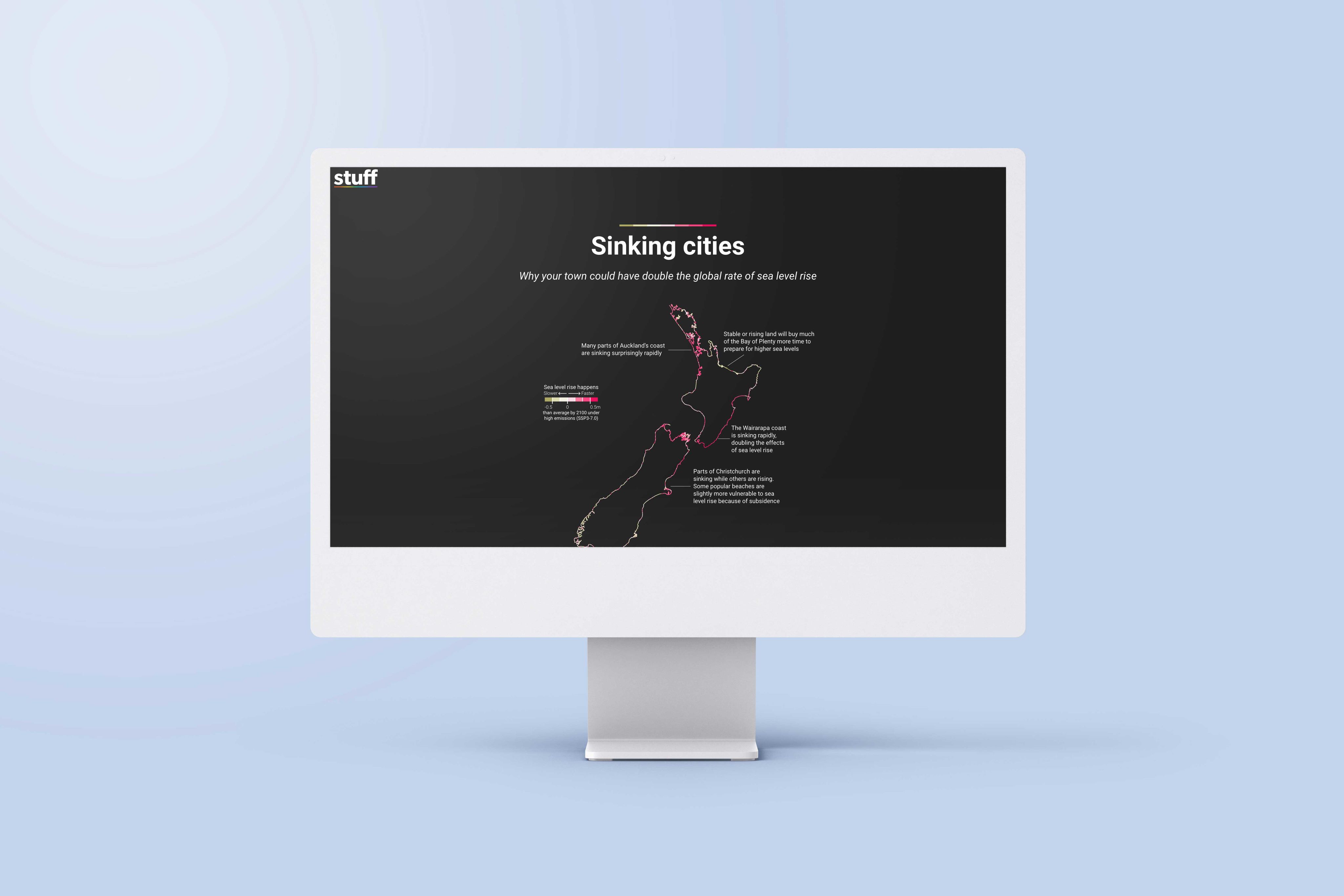

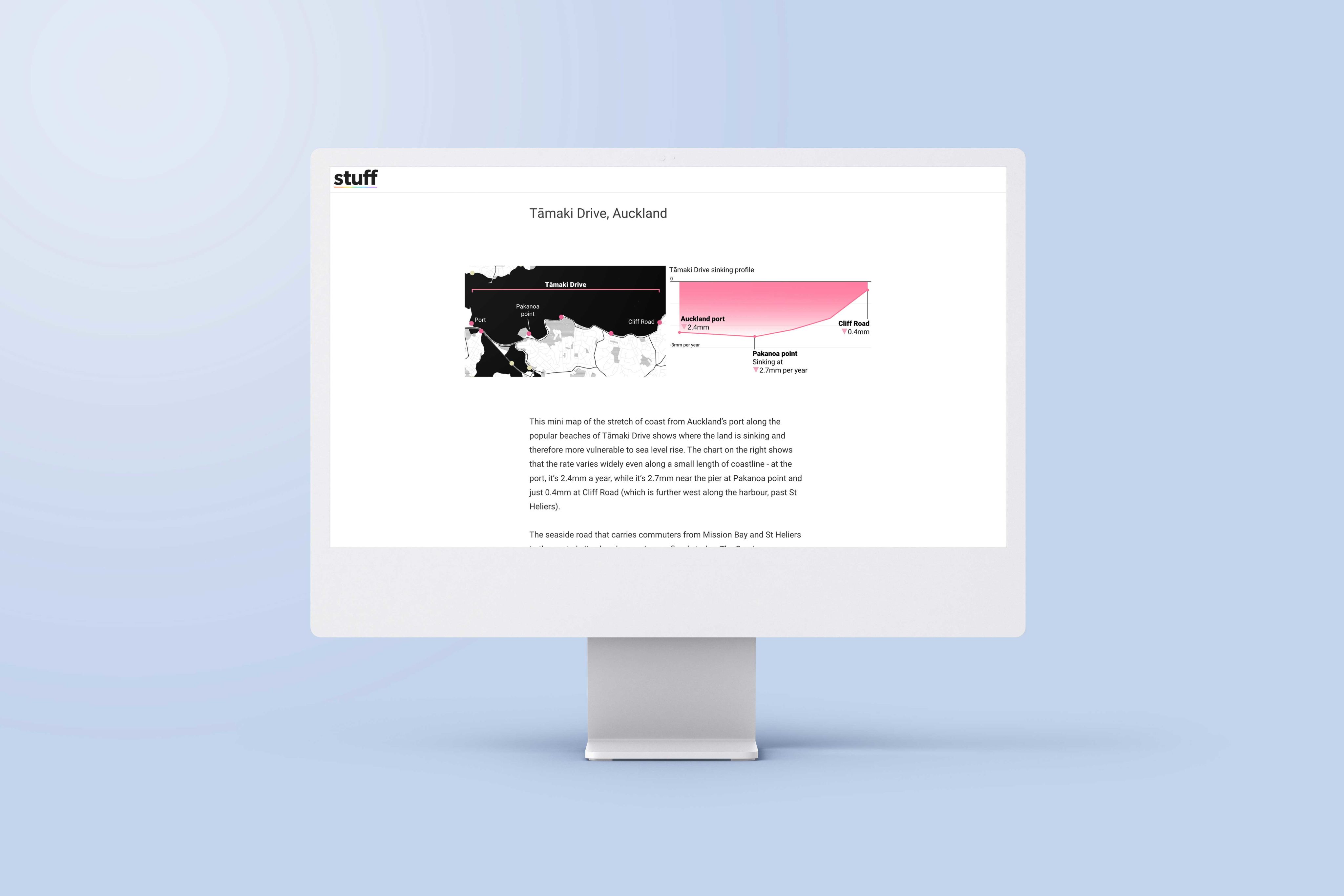
3. Sinking cities
- What it is: an environmental report on sea level rise
- Who created it: Stuff
- What the maps show: the projected rise of sea levels along several parts of the coast of New Zealand
Why we picked this example
This is a prime example of using interactive maps for data visualisation, to help tell a story with data. The report uses a minimalist map to strip away everything but the most important details. Then, the colour-coded scale makes the data set super digestible by clearly highlighting areas with a high projected sea level rise.
The clickable interactivity allows readers to select their own coastal region, zoom in, and view an additional data overlay for each point on the map. This report allows the maps to take up the most real estate on the screen, as it is the focus of the feature.
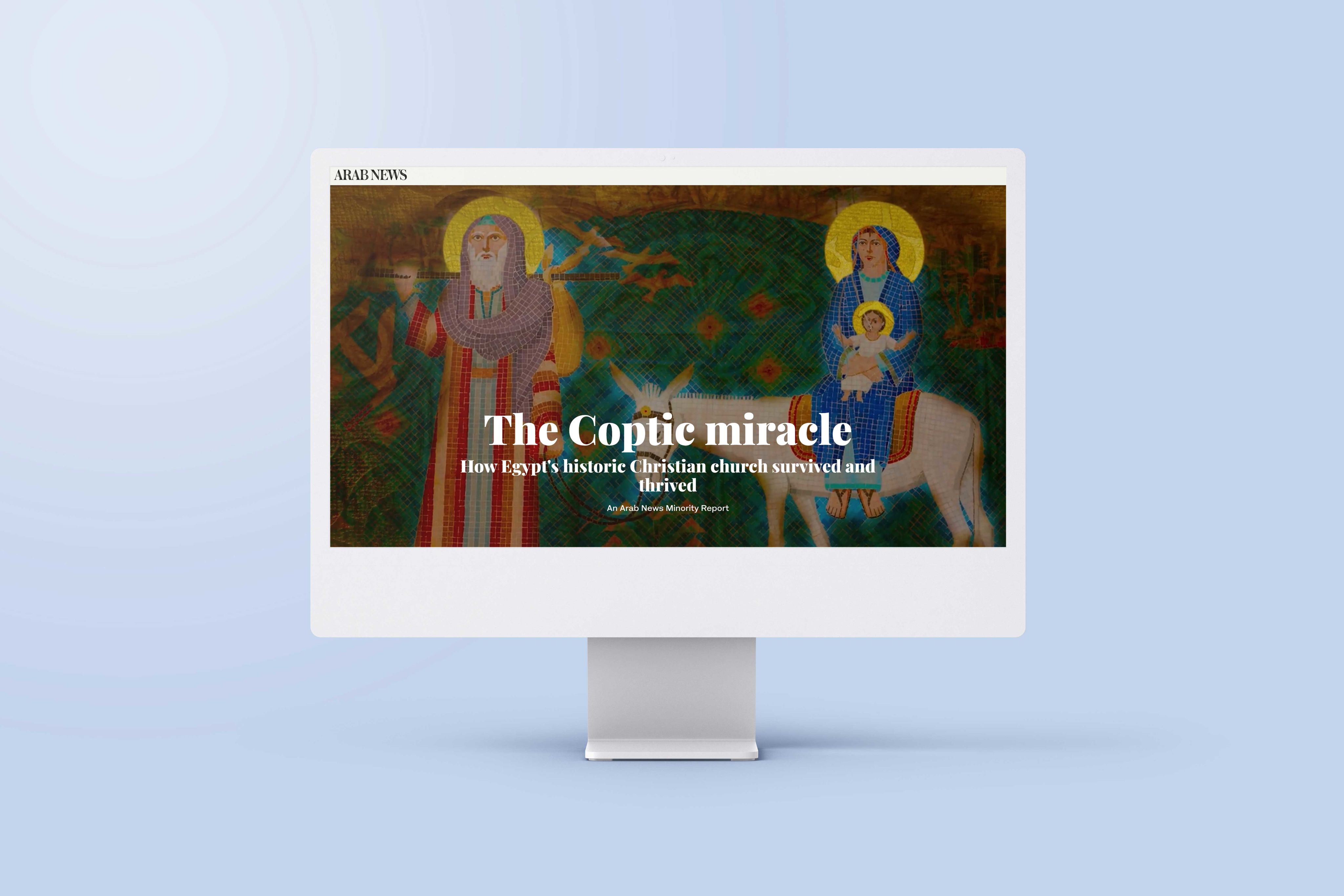
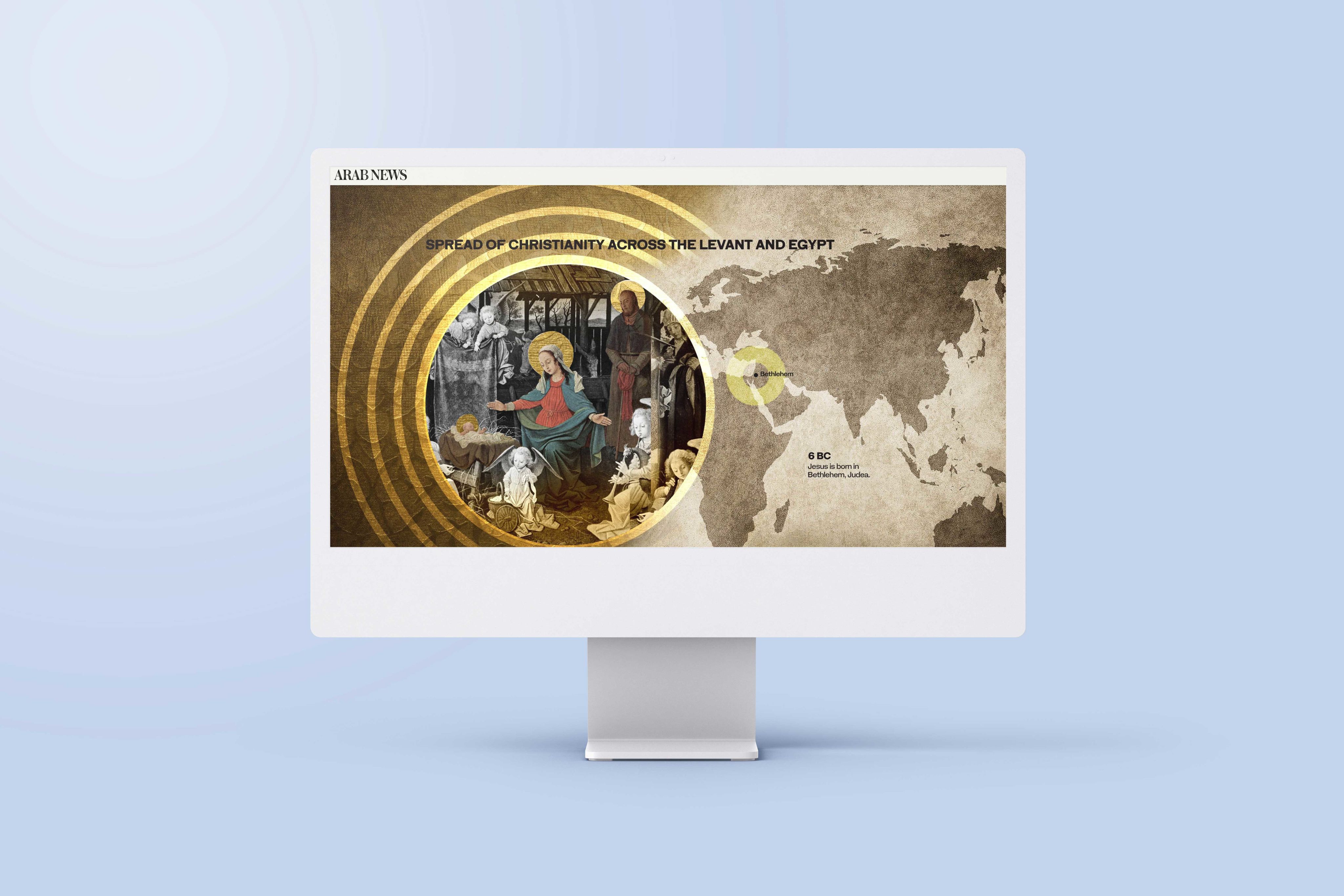
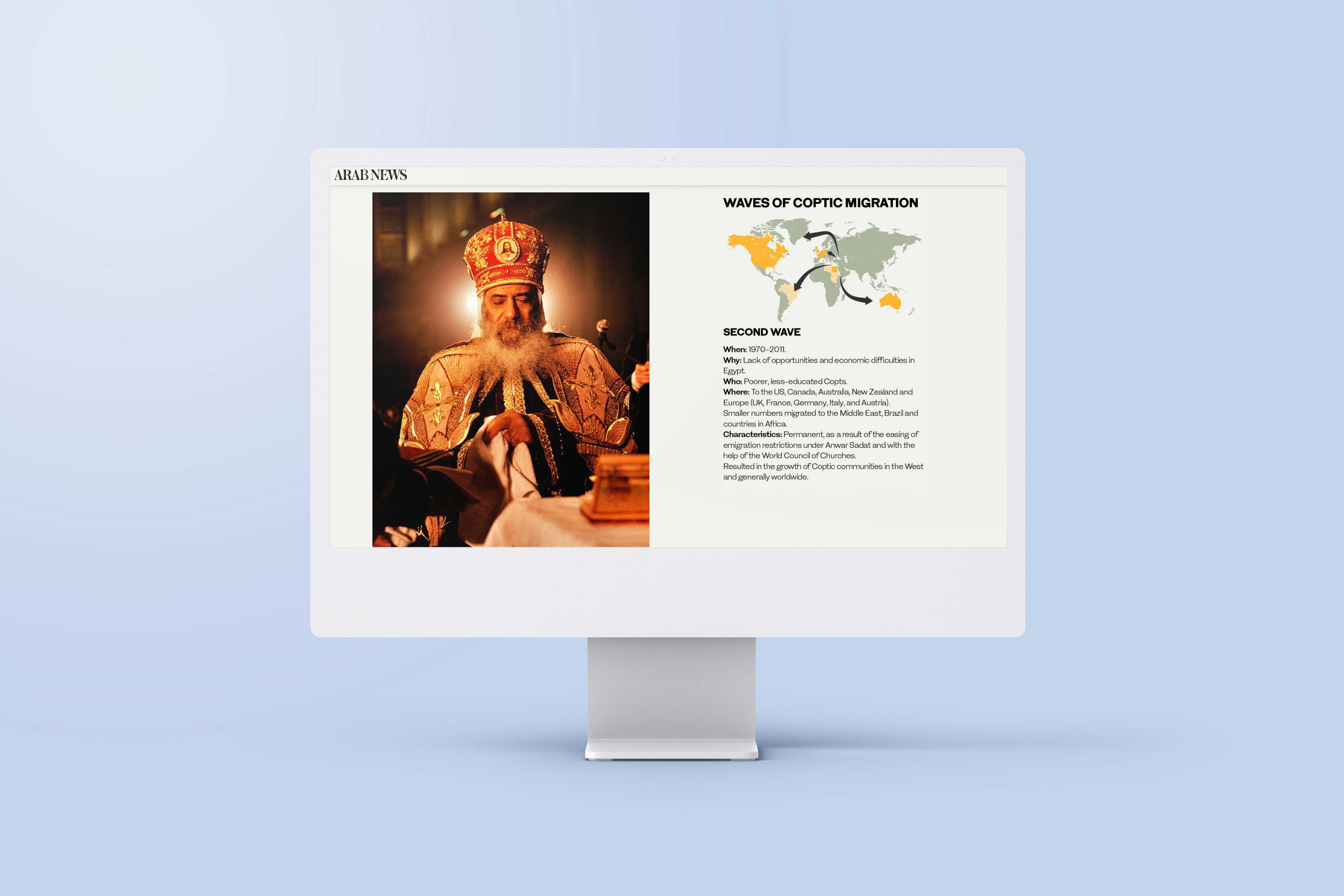
4. The Coptic miracle: How Egypt's historic Christian church survived and thrived
- What it is: a history of the development of Coptic Christianity
- Who created it: Arab News
- What the map shows: the three waves of migration of Coptic Christianity around the world
Why we picked this example
This story from Arab News uses interactive maps in a few ways. The first map is an example of stunning visual and web design and helps showcase how Christianity originally came to Egypt and the surrounding region. The highlighted areas show this spread and include years to help readers understand the timeline.
The second world map, later in the story, visualises the diaspora of Coptic Christianity beyond Egypt as a result of persecution. As you scroll, it clearly shows the route of each of the three waves of migration across the globe.
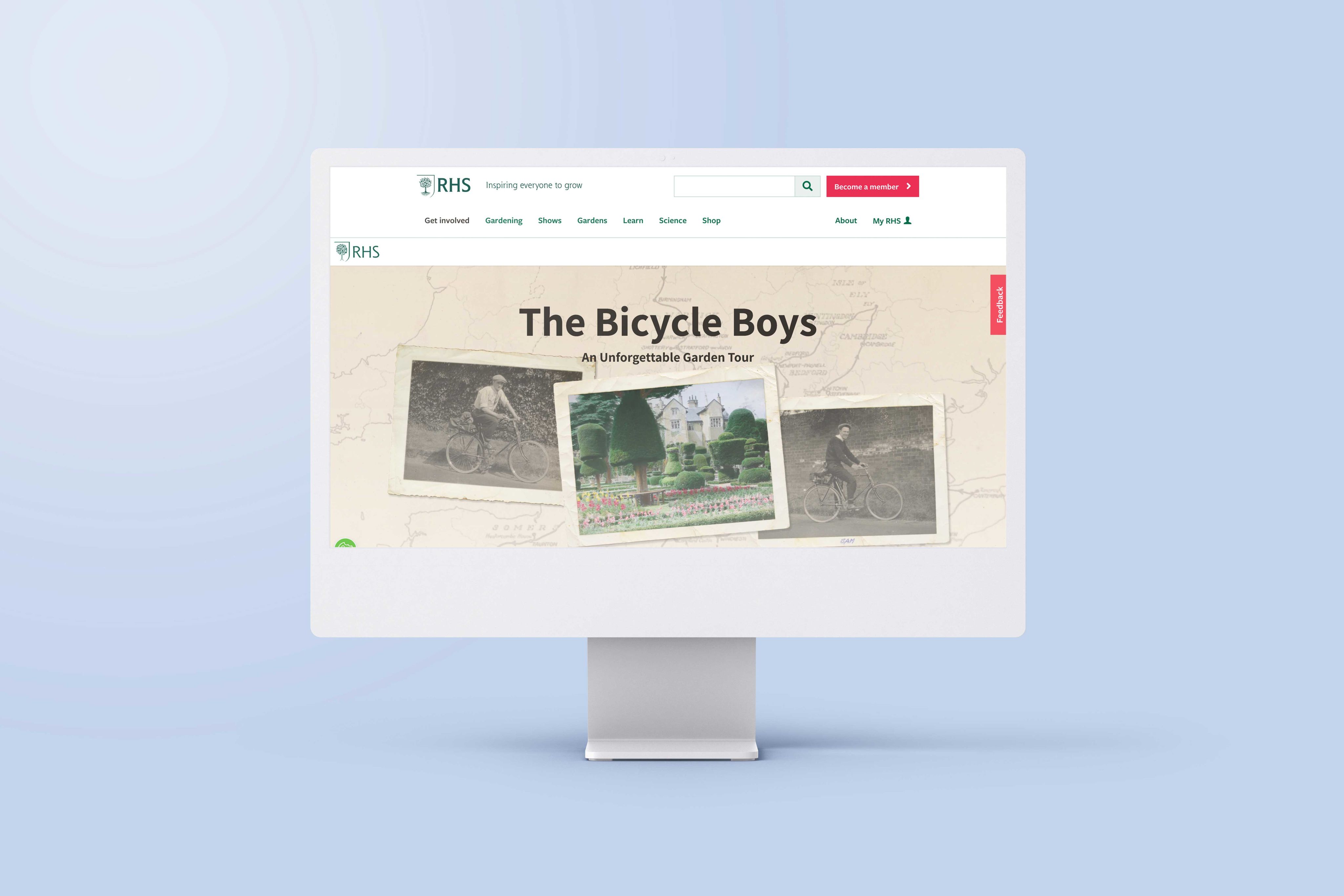
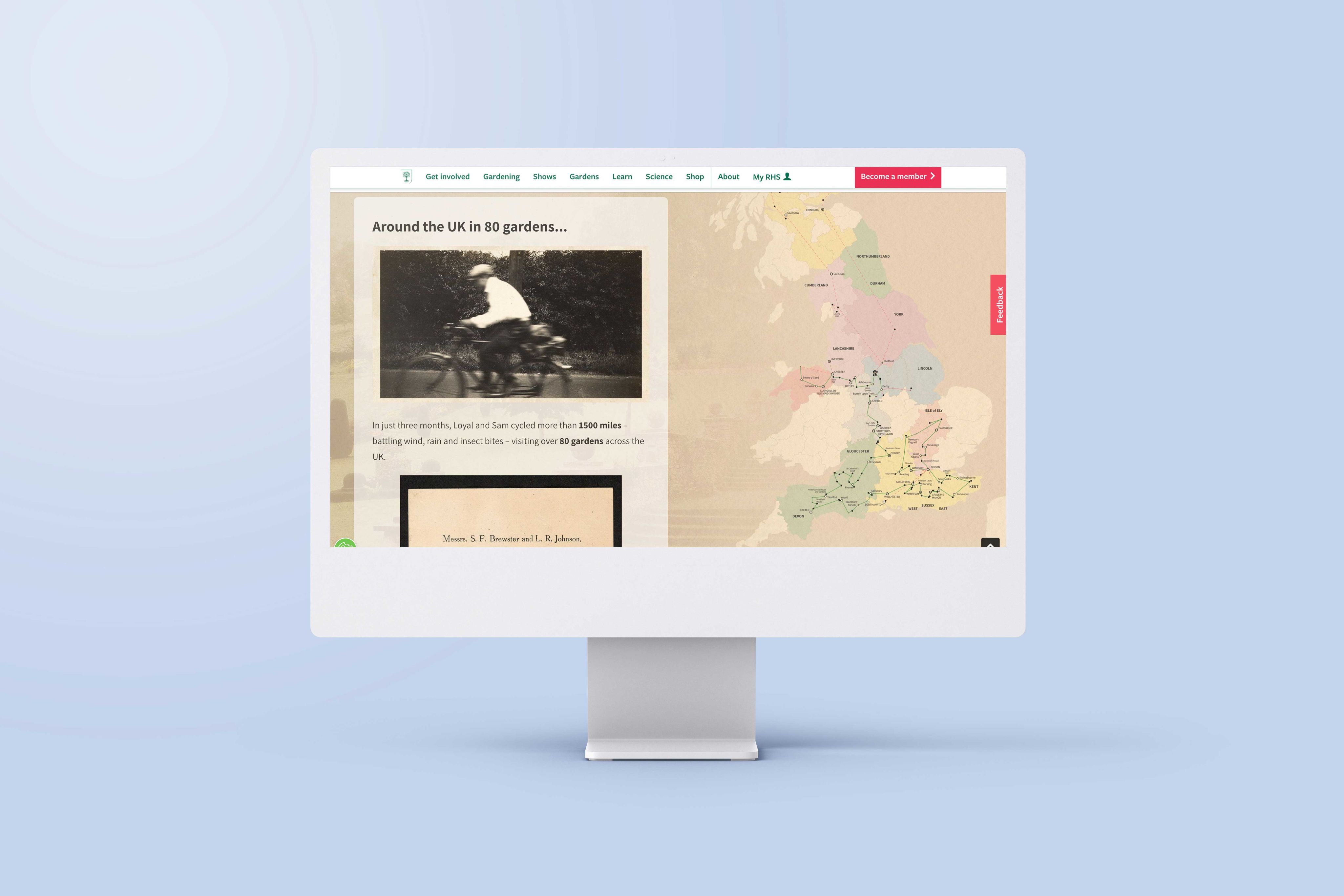
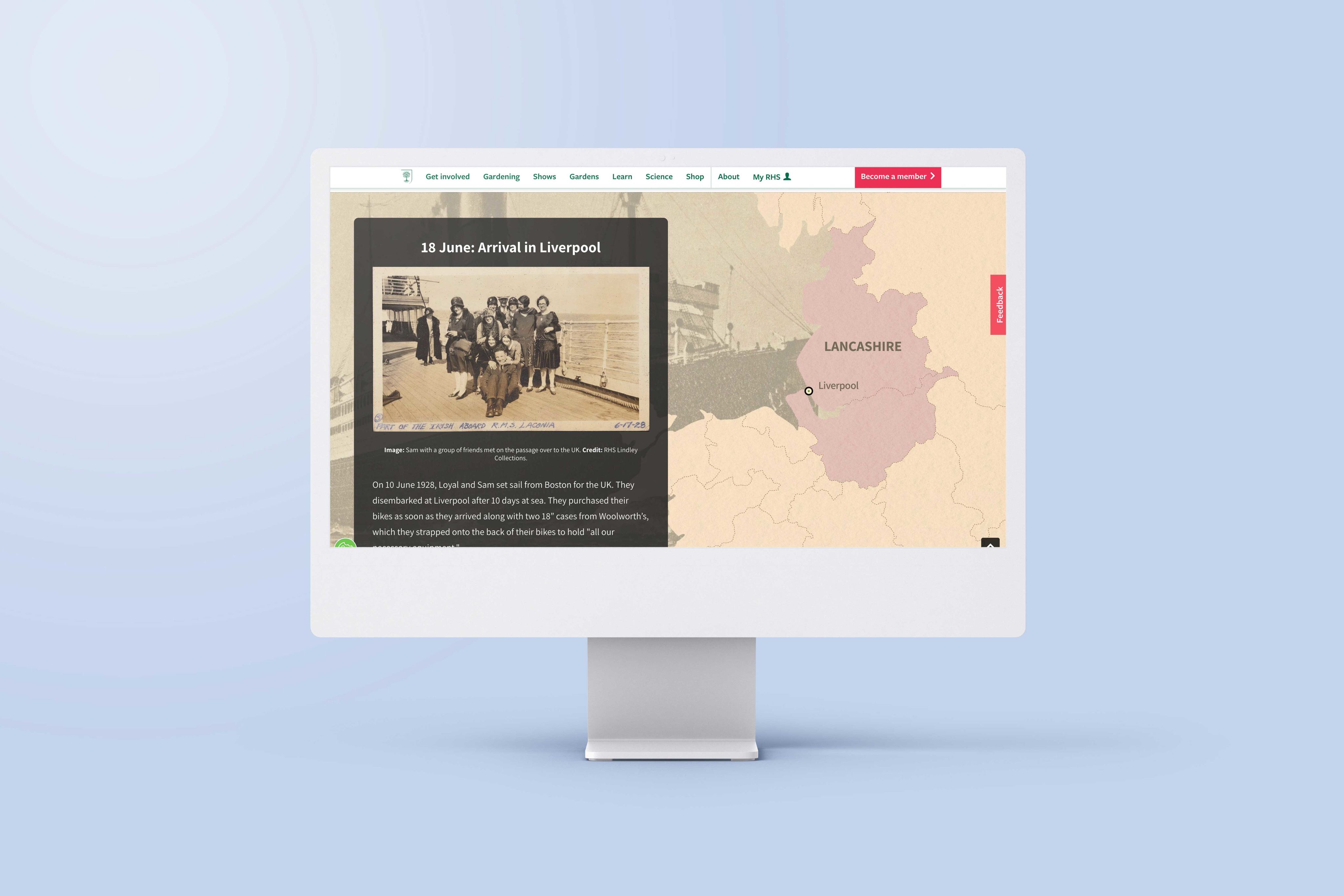
5. The Bicycle Boys: An Unforgettable Garden Tour
- What it is: a retrospective virtual tour
- Who created it: Royal Horticultural Society
- What the map shows: the routes Loyal Johnson and Sam Brewster took through more than 80 gardens across the UK.
Why we picked this example
This virtual tour tells the story of two Americans who cycled their way through more than 80 quintessential gardens across the UK. Whether you’re familiar with British geography or not, the scroll-activated map, combined with charming infographics, help you follow right along with Sam and Loyal as they travelled.
Designed to blend seamlessly with the visual style of the rest of the piece, the map design illuminates each garden and its surrounding area as the story progresses.
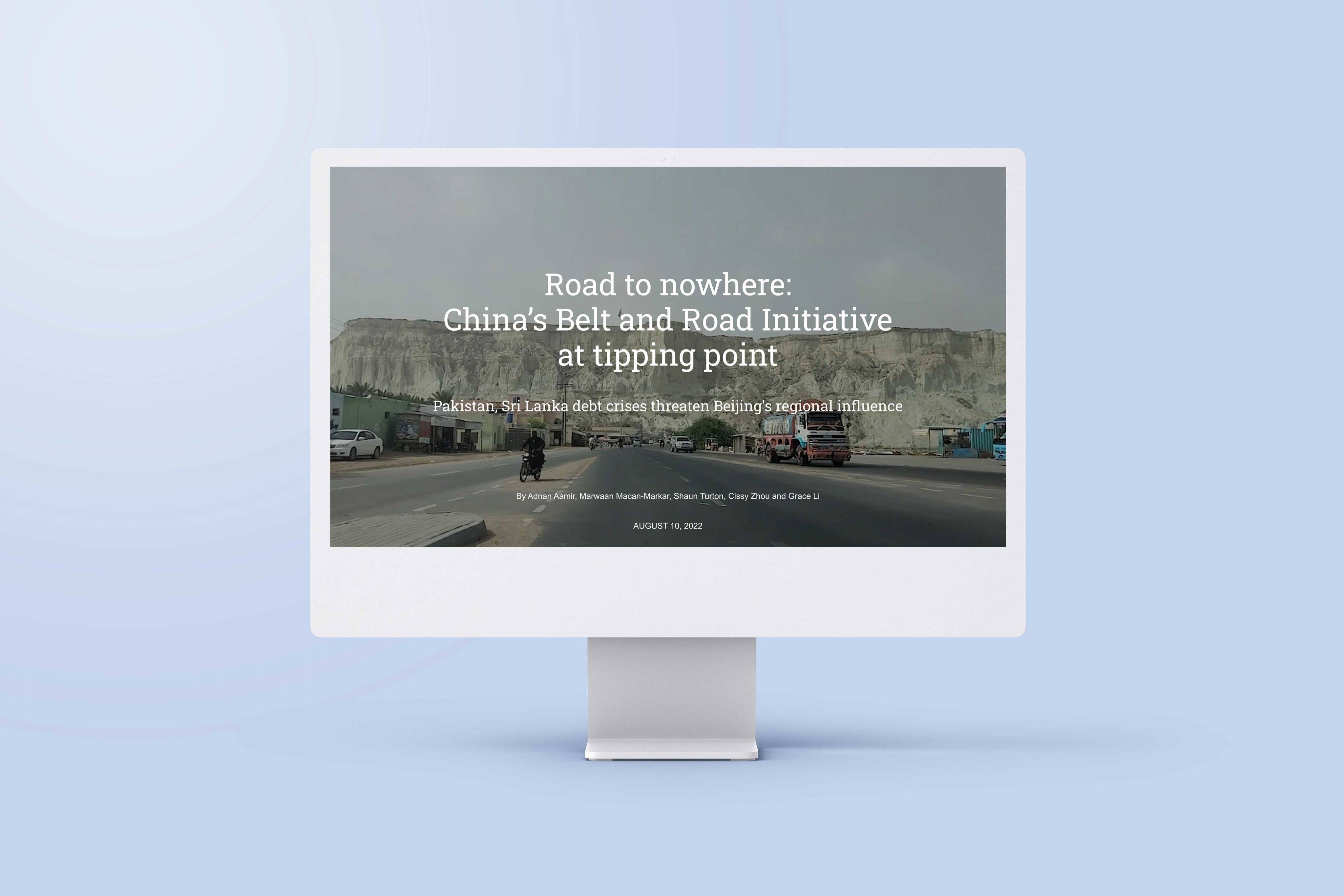

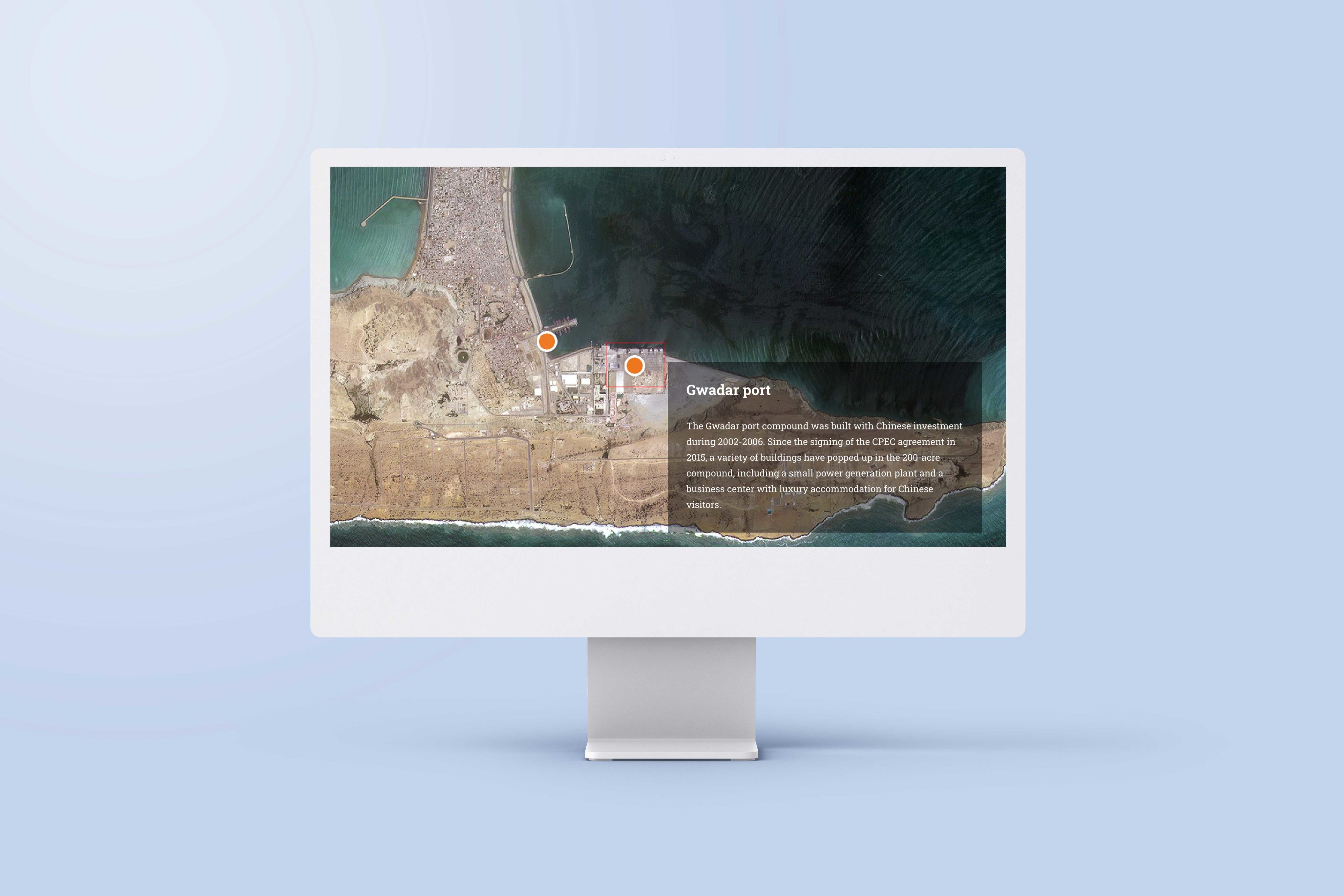
6. Road to nowhere: China’s Belt and Road Initiative at tipping point
- What it is: an article on China’s Belt and Road Initiative (BRI)
- Who created it: Nikkei
- What the map shows: the global spread and ambitions of the BRI
Why we picked this example
This article from Nikkei uses a simple but powerful map to show the development, scale, and ambition of the Chinese Belt and Road Initiative (BRI). Using scrollmation, the map colours in countries participating in the BRI as the years progress from 2014 to 2022.
Early in the story, the map helps to hammer home the wide, global ambition of the policy, before diving into its failures and stagnation.

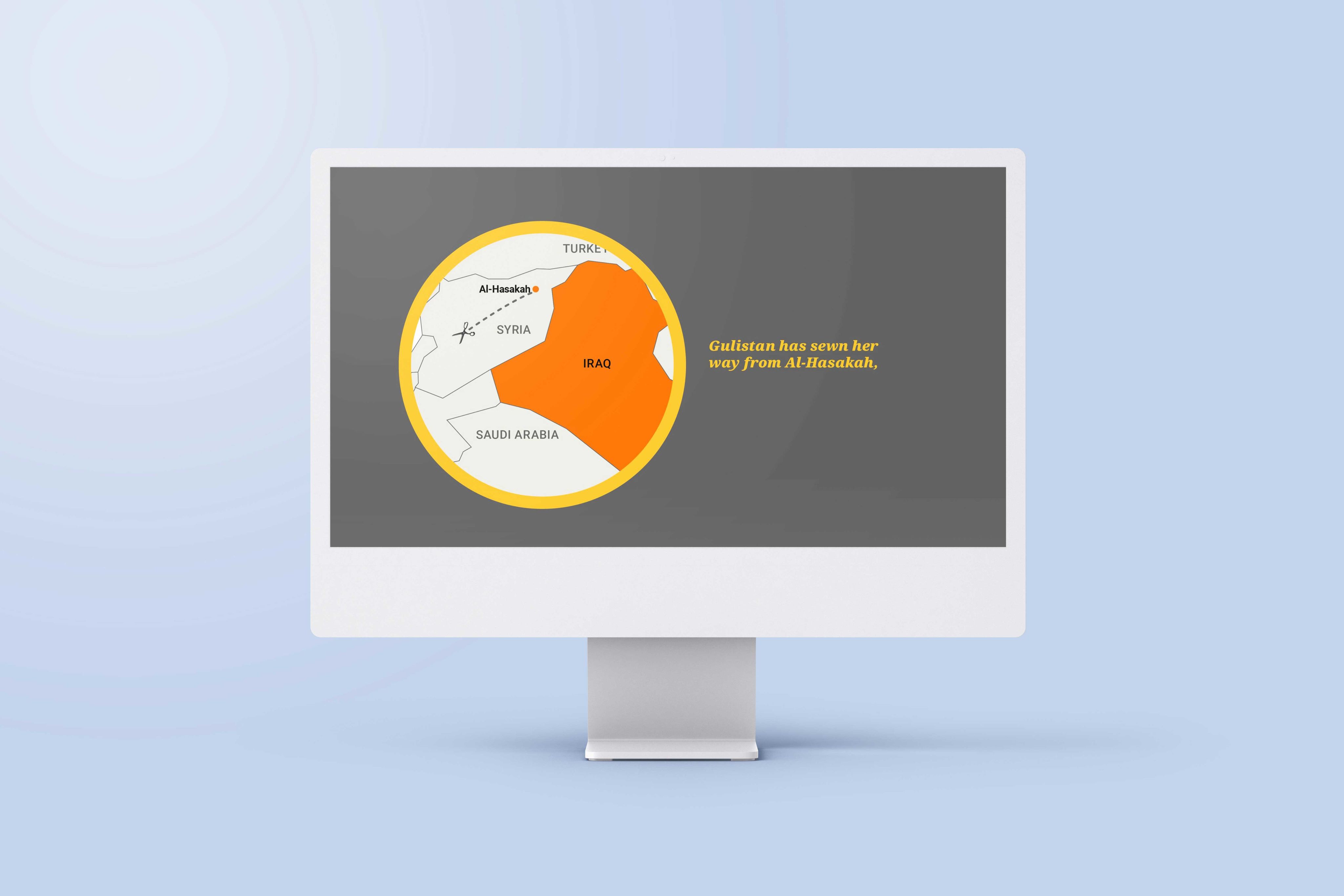
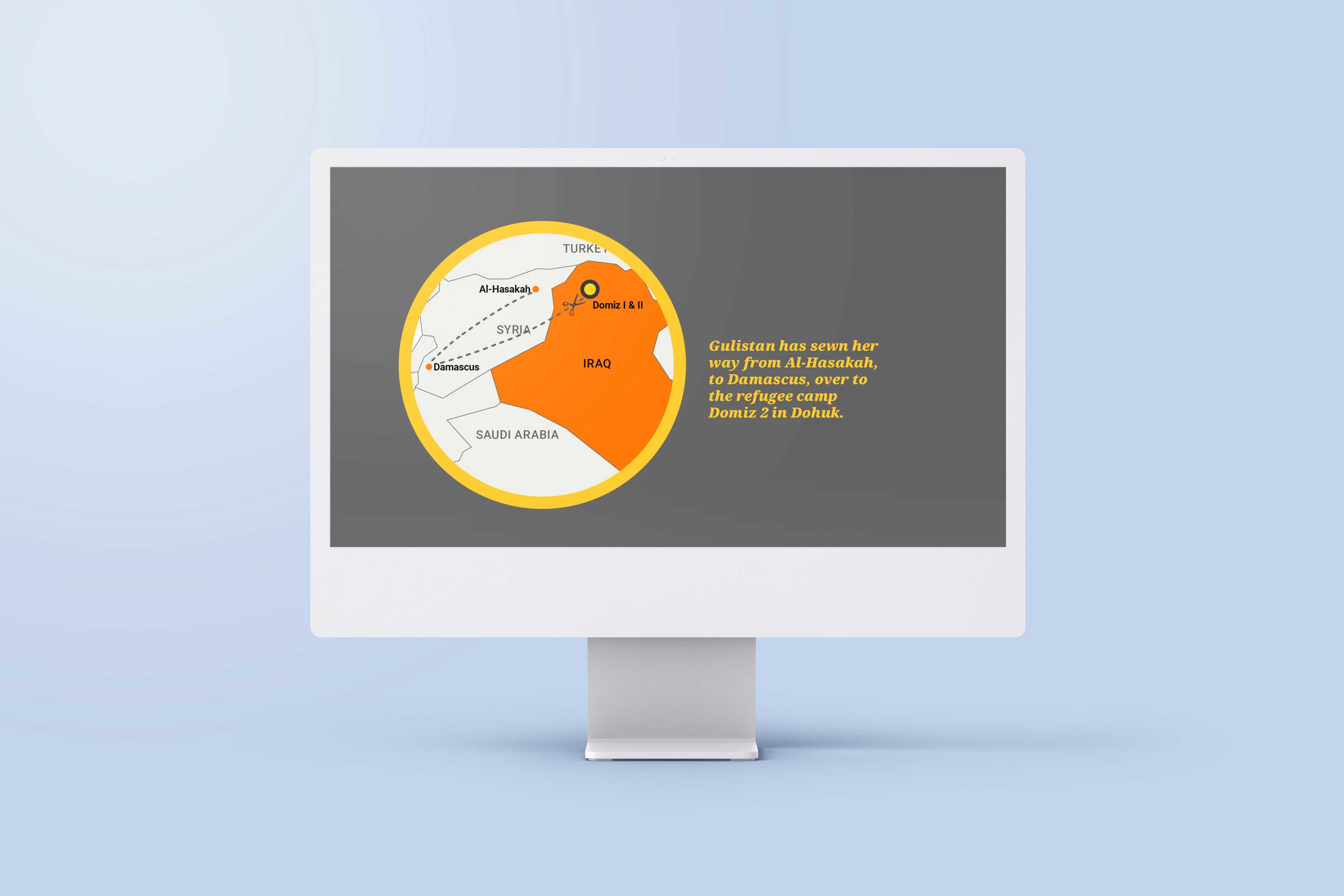
7. Sewing her lifelong dream
- What it is: a story of war, displacement, and sewing
- Who created it: NRC
- What the map shows: Gulistan’s route from Al-Hasakah to Dohuk
Why we picked this example
Gulistan’s story is one of war, migration, and perseverance told through the lens of her sewing. The map is only a small part of the story, but it flows perfectly with the overall narrative.
Visually, it plays on the sewing theme with the dashed line and scissors, which expand as you scroll to show Gulistan’s path through the region.
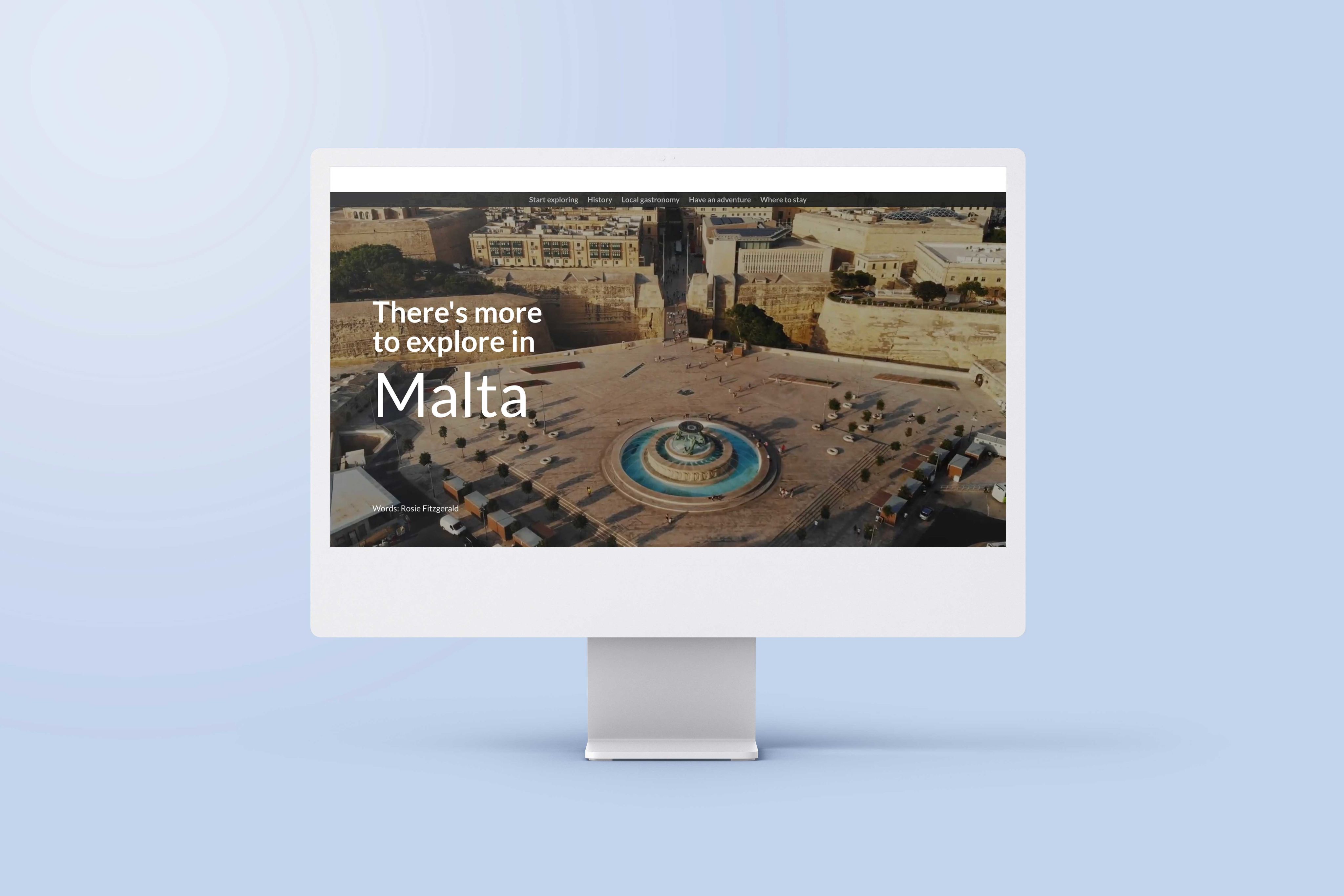
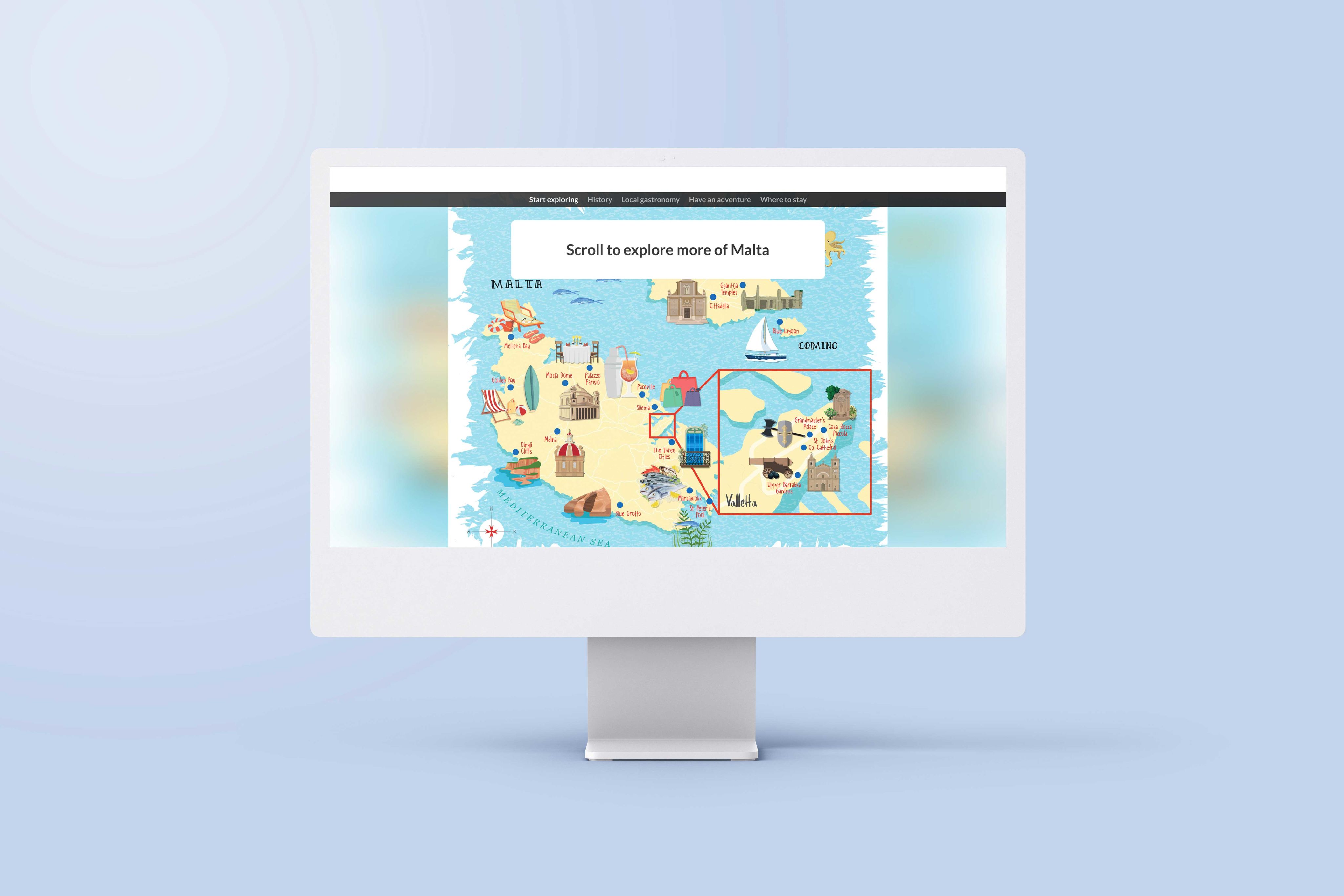
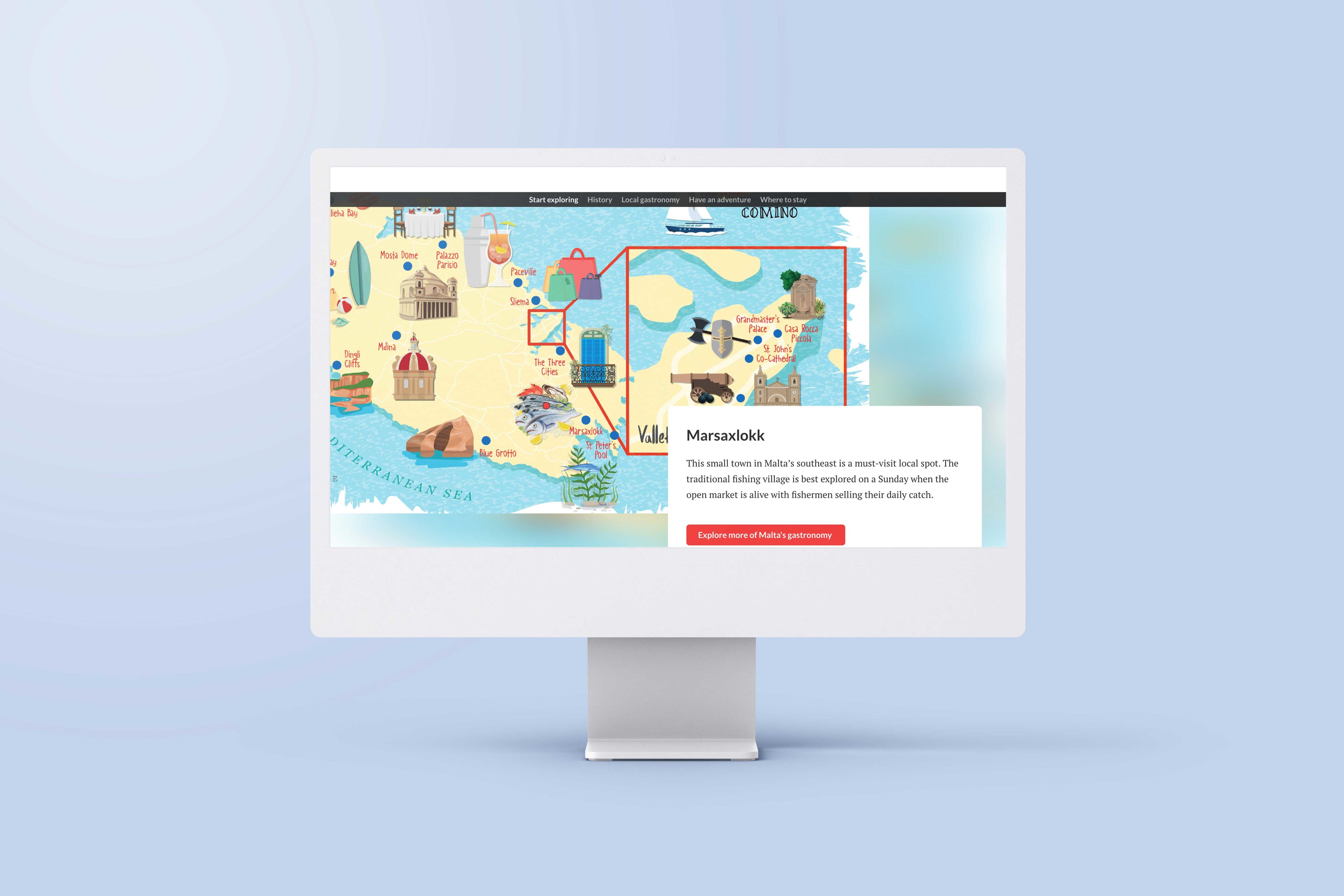
8. There’s more to explore in Malta
- What it is: a tourist’s guide to visiting Malta
- Who created it: Wanderlust and Visit Malta
- What the map shows: the geography and points of interest of Malta
Why we picked this example
Visit Malta hopes to generate interest in the island of Malta and all it has to offer. The map in this piece for the travel publication Wanderlust does just that by helping to familiarise the audience with the overall geography of Malta while calling out specific points of interest.
The map moves, zooms in, and highlights key areas as you scroll through the guide. Overlays help add context and information about points of interest and activities in each region of the island.
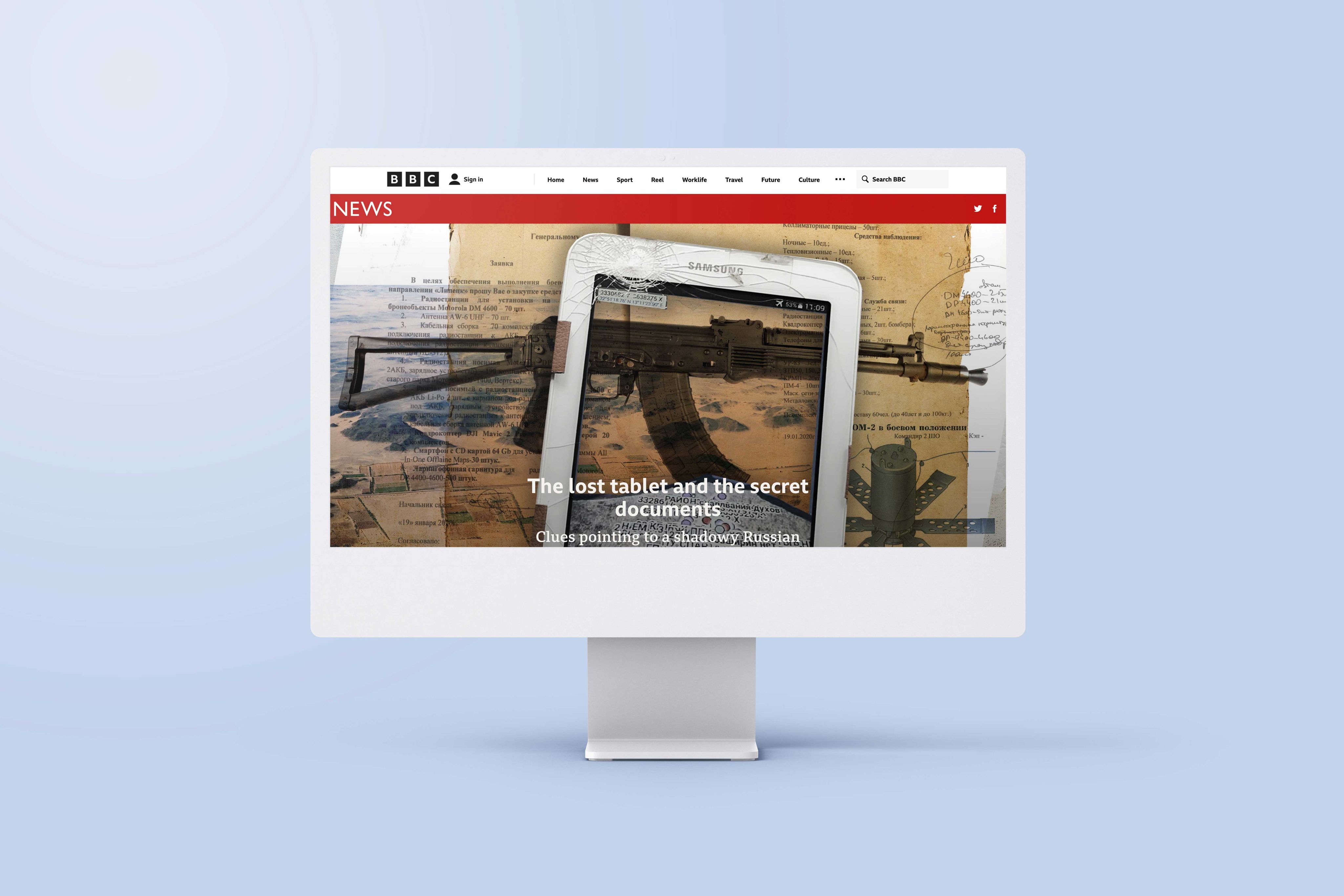
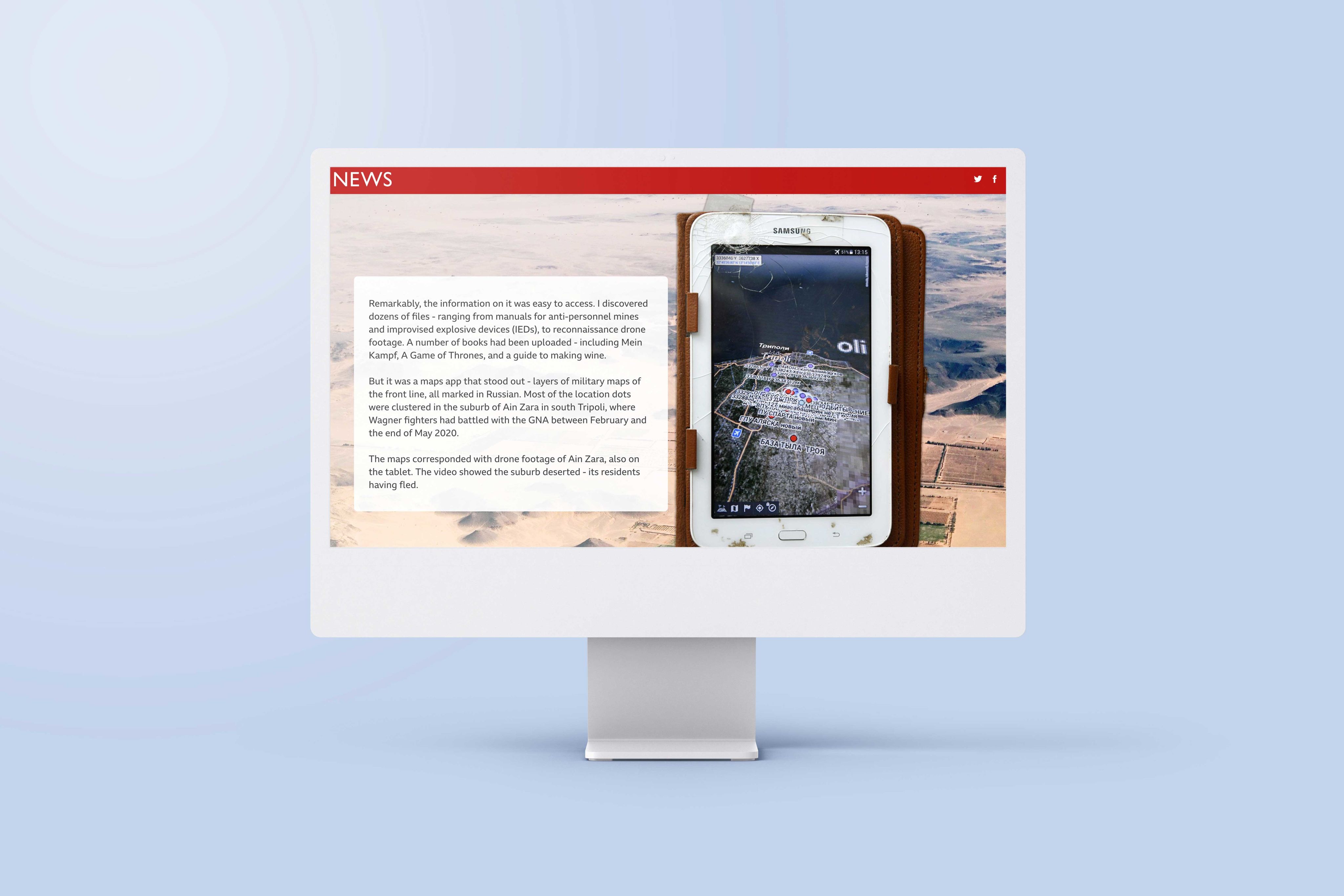
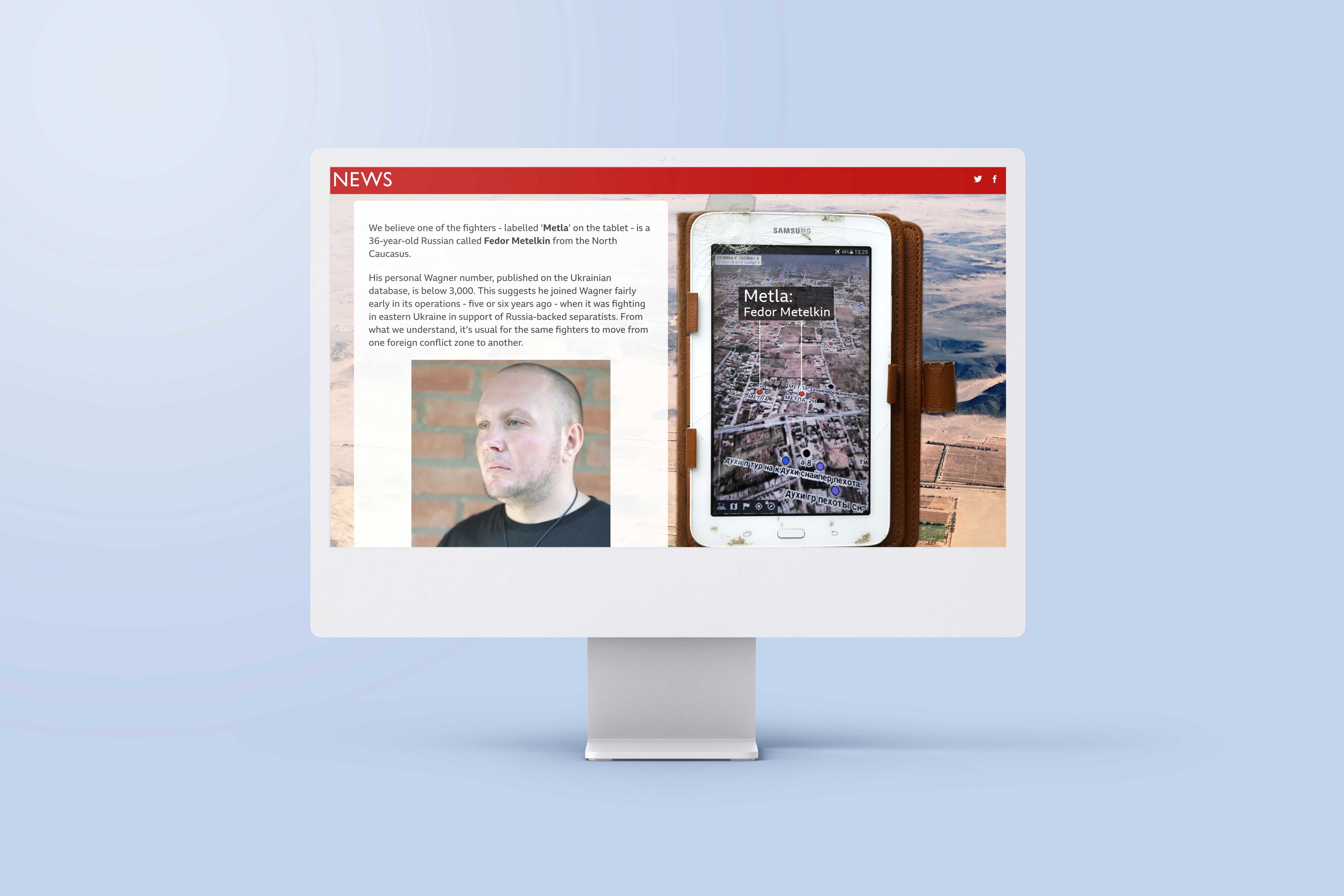
9. The lost tablet and the secret documents
- What it is: a report on a secretive Russian mercenary group
- Who created it: BBC
- What the map shows: military maps with the locations of assets, mines, and more
Why we picked this example
When a lost tablet was found chock full of information on a shadowy Russian mercenary group, the BBC published a report on their analysis of the details it contained. Some of the most compelling findings came from the tablets Maps app. The report includes both static images from the app, along with simple overlays to help add context for readers. It’s a great example of using an interactive map simply.
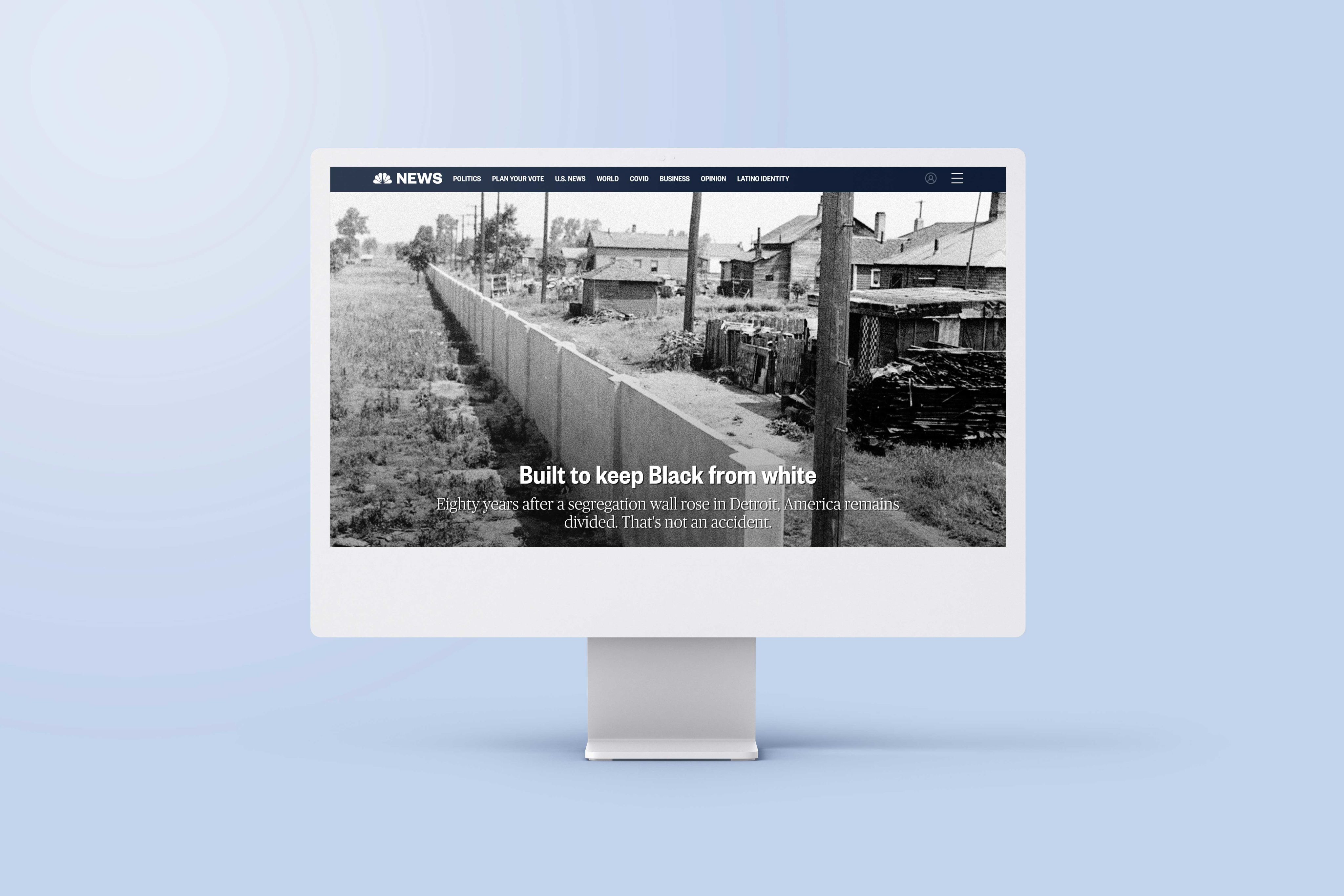
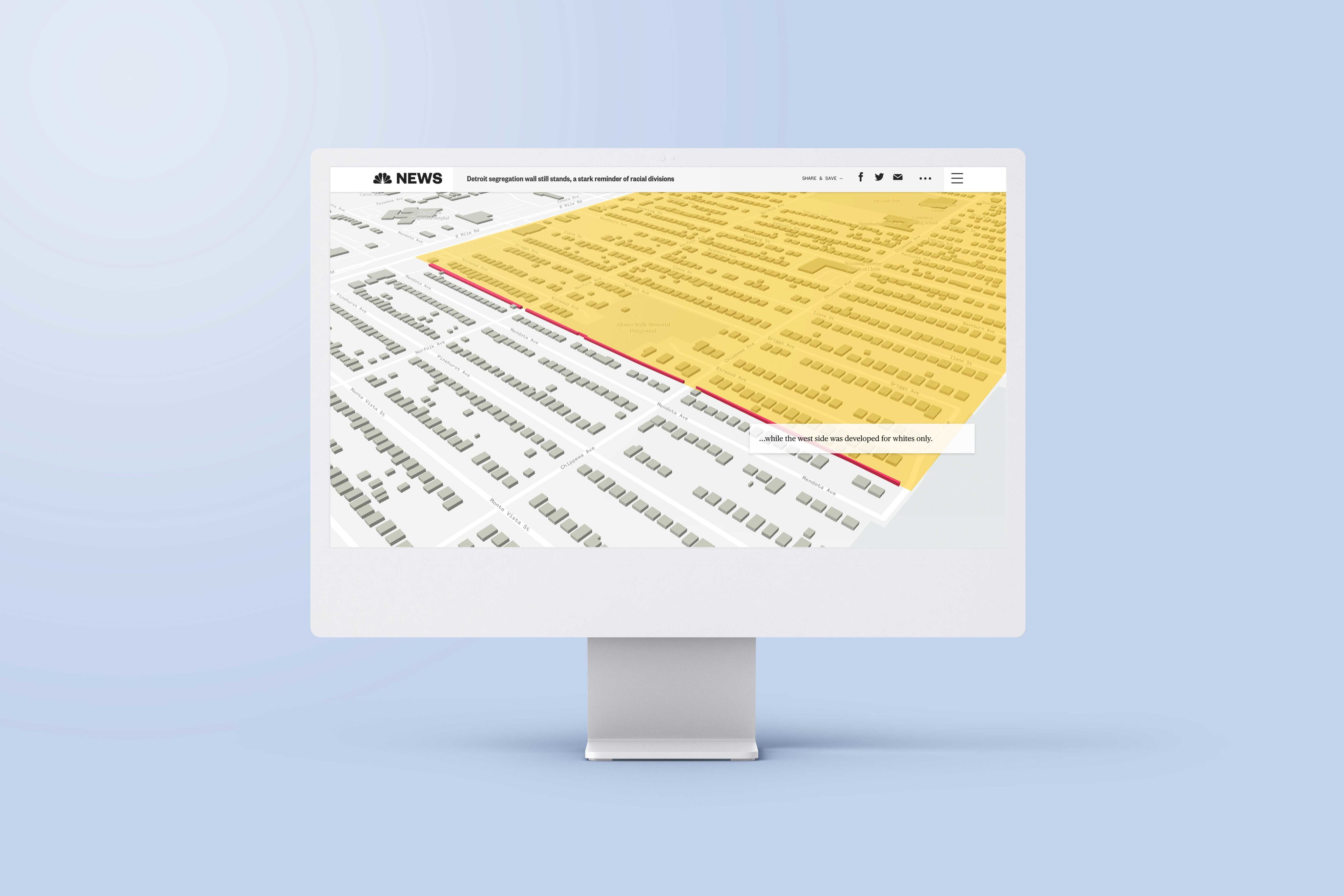
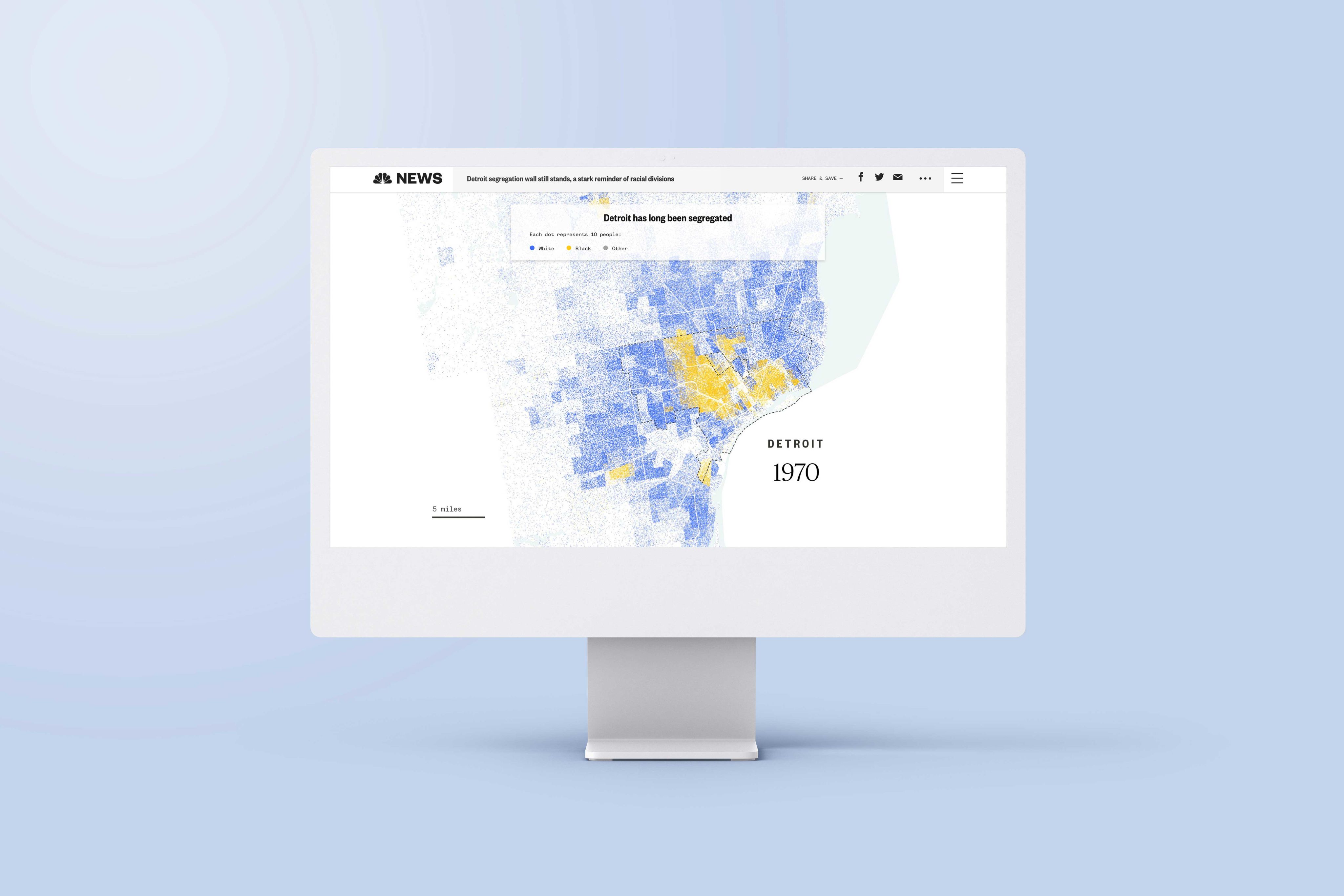
10. Built to keep Black from white
- What it is: an editorial on the history of segregation in America and its legacy today
- Who created it: NBC News
- What the map shows: the historical and continued legacy of racial segregation in Detroit
Why we picked this example
This editorial from NBC News (which won a Webby Award for Best Individual Editorial Feature) uses several interactive maps to show the reality and the legacy of racial segregation in Detroit. Each map serves to showcase the geography of Detroit and its suburbs, along with the segregational lines drawn historically.
Perhaps the most powerful map is this last one. It shows the clear racial divides across Detroit and how they remain largely unchanged from 1930 to 2019, then it illustrates in no uncertain terms the real financial impact of that segregation on home values in each neighbourhood.
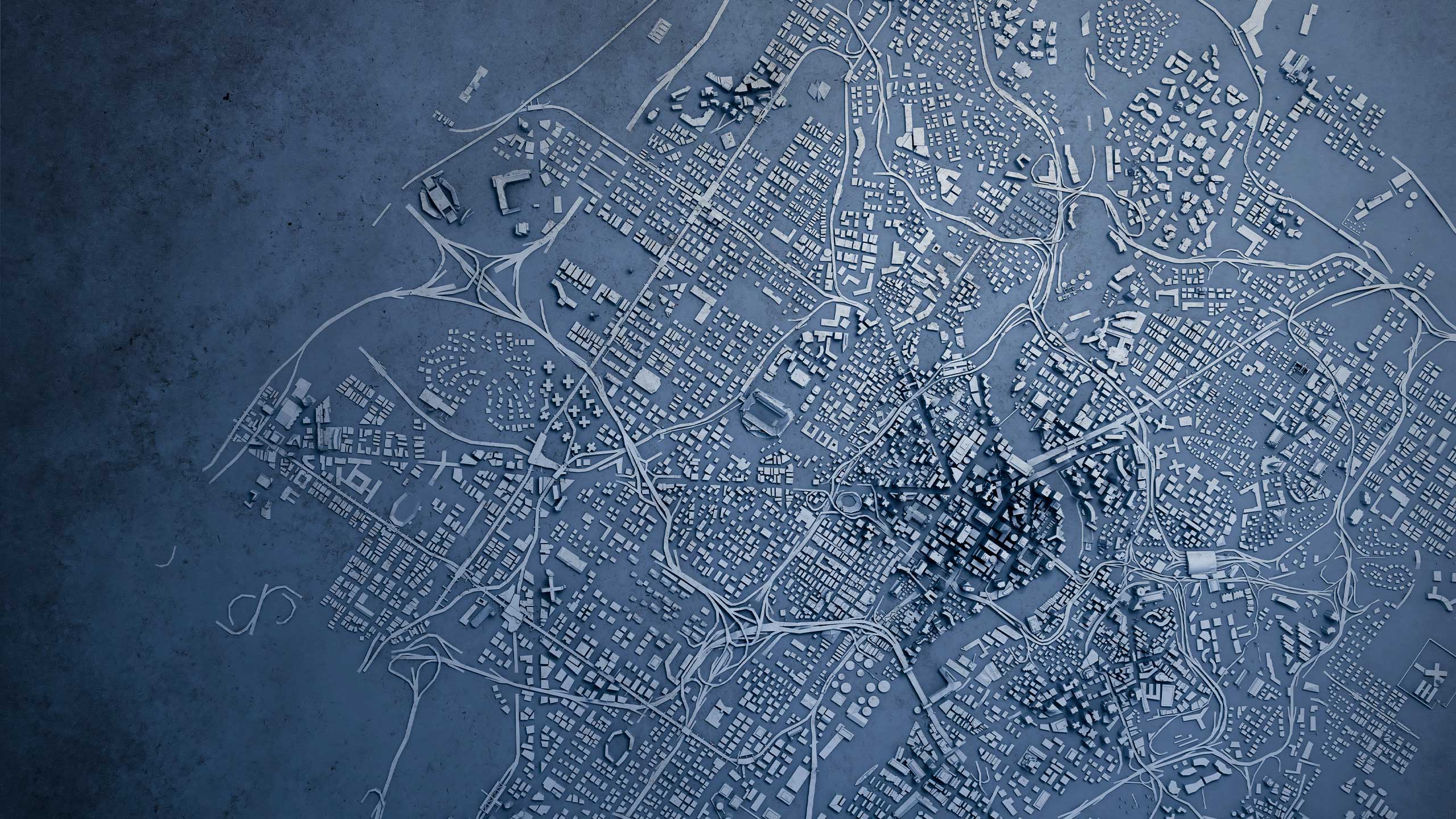
Wrapping up
As the examples above illustrate, there’s a huge variety of ways to use and approach interactive maps. Our last example, in particular, makes it clear how powerful interactive maps can be for digital storytelling — there’s so much potential for map-based storytelling on the web.
With digital technologies and tools making this kind of interactivity accessible to a growing number of people, there are exciting horizons ahead for every sector, from journalism and tourism, to education, nonprofit, and beyond.


